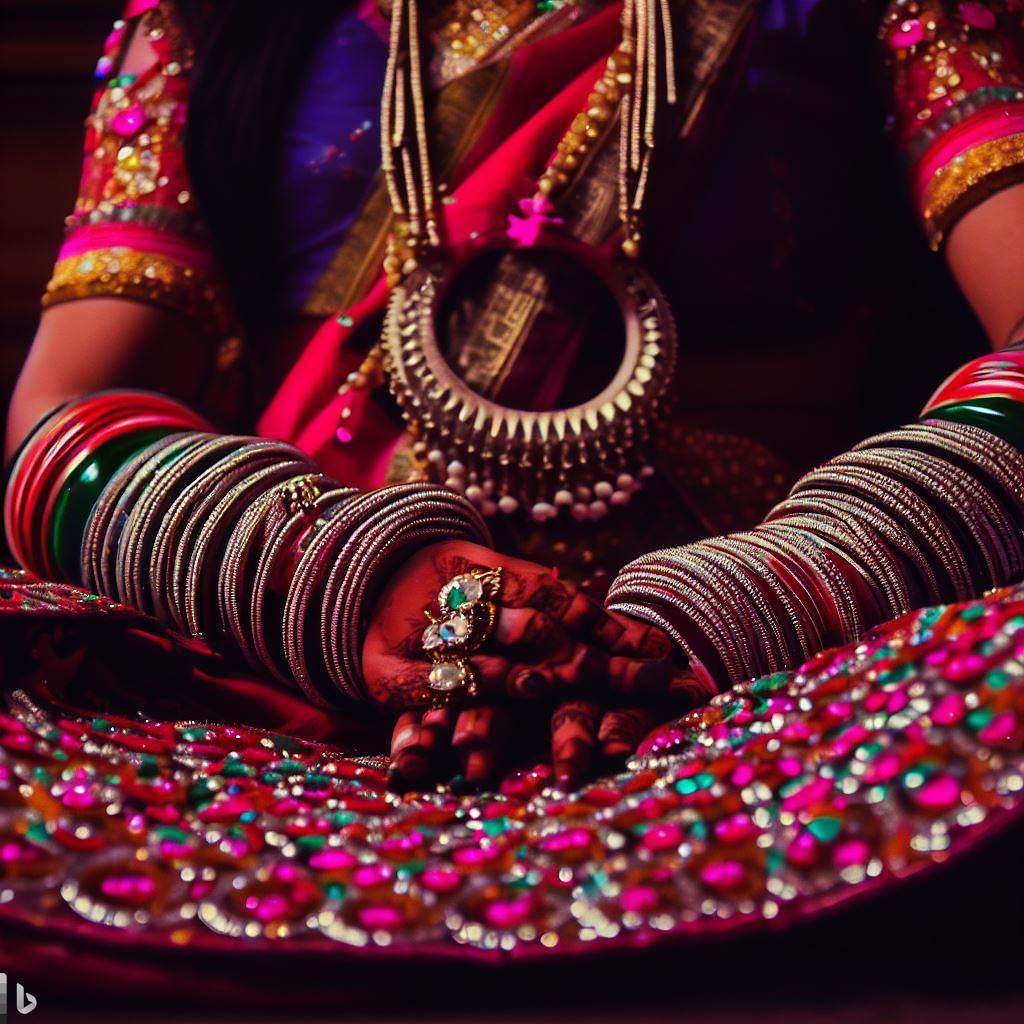Indian ethnic wear is a mesmerizing tapestry of colors, textures, and intricate designs, adorned with one of the most captivating art forms – embroidery. The artistry of embroidery has been an integral part of India’s cultural heritage for centuries, gracing traditional garments with exquisite beauty and timeless elegance. Each stitch is a labor of love, telling stories of craftsmanship, creativity, and the rich cultural heritage of the diverse regions of India.
A Kaleidoscope of Styles: Indian embroidery is a diverse and enchanting art form, with each region boasting its unique techniques and styles. From the vibrant Phulkari of Punjab to the opulent Zardozi of Lucknow, and the intricate Kantha of West Bengal, every embroidery style weaves tales of tradition and skill. The use of different stitches, threads, and embellishments reflects the distinct cultural influences and regional aesthetics, making Indian embroidery a true celebration of diversity.
Materials and Embellishments: Artisans use a wide range of materials and embellishments to create the breathtaking embroidery seen in Indian ethnic wear. Fine silk, cotton, and various other fabrics serve as the canvas for these artisans’ creativity. Embroidery threads in an array of colors, including gold and silver zari, resplendent beads, sequins, and stones, lend a regal touch to the designs. The incorporation of mirrors, shells, and even pieces of metalwork adds depth and charm to the embroidered masterpieces.


Time-Honored Techniques: Embroidery in India has a rich history that has been passed down through generations. The techniques are often intricate and time-consuming, requiring immense skill and attention to detail. The artisans use a variety of stitches, such as chain stitch, running stitch, satin stitch, and mirror work, among others. Each stitch is carefully placed, and the artistry lies in the precision and finesse with which the design is executed.
Celebrating Festivities and Milestones: Embroidered ethnic wear plays a significant role in Indian celebrations and milestones. From weddings and religious festivities to cultural events and special occasions, embroidered garments hold immense cultural and emotional significance. For instance, bridal wear often features elaborate embroidery, symbolizing prosperity, and auspiciousness. Embroidered attire for festivals exudes joy and vibrancy, reflecting the spirit of the occasion.
A Global Appeal: The artistry of Indian embroidery has transcended borders and has garnered admirers from around the world. Renowned fashion designers and celebrities have embraced Indian embroidery in their collections and red carpet appearances, bringing global attention to this time-honored craft. The fusion of Indian embroidery with western silhouettes and modern designs has also gained popularity, bridging cultures and celebrating diversity in the world of fashion.
Preserving Traditions: While contemporary fashion trends continue to evolve, efforts to preserve traditional embroidery techniques and support the artisan community remain crucial. Government initiatives, NGOs, and fashion houses have taken steps to promote sustainable practices, empowering artisans and ensuring the preservation of this precious cultural heritage.
A Legacy of Beauty Indian embroidery is a timeless art form that continues to weave its magic, celebrating the beauty of tradition, creativity, and skilled craftsmanship. With each intricate stitch and elaborate motif, embroidered ethnic wear embodies the essence of India’s rich cultural diversity. It is a testament to the artistic genius of the artisans and their unwavering dedication to preserving the legacy of this exquisite art form. As embroidered garments grace festive occasions and celebratory moments, they not only embellish the wearer but also unfurl the artistic tapestry of India’s enduring heritage, captivating hearts around the globe.
